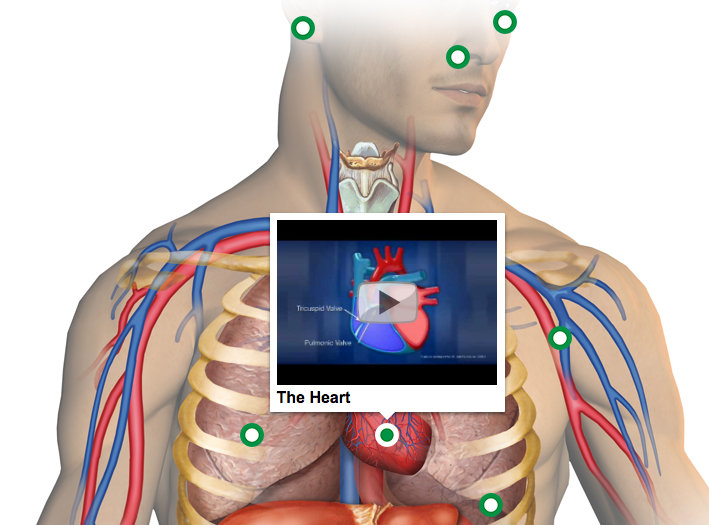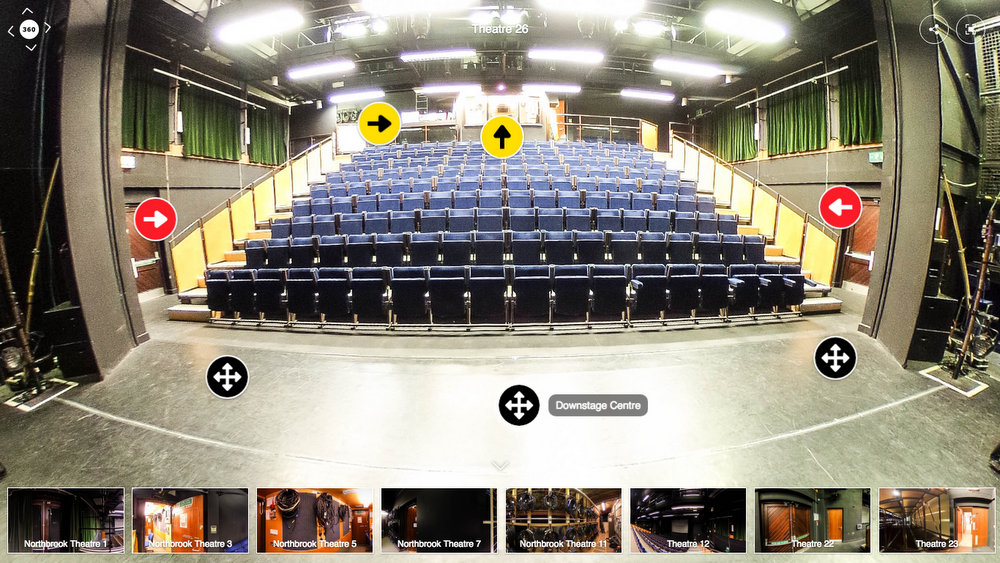
These interactive images look appealing as a learning tool. They pull together a series of short, quirky videos and animations that provide the low down on a collection of human organs. To what end? To some degree a Dorling Kindersley annotated book did this in the past. Stick it on an interactive screen and click on each in front of a class to fill 45 minutes. What is really required as a learning experience is to have students learn the skills to create these themselves, then research and add the links (or to shoot their own pieces). All of the above came from YouTube.
Here's the link: https://www.thinglink.com/scene/880832510185963521

We use ThingLink.
The difference is that I am using 360 images that can be viewed through a VR headset, or desktop or touchscreen.
Here is my ThingLink VR Tour of Northbrook Theatre: https://www.thinglink.com/mediacard/1073243716732321794
I am working with the College team here to create an immersive experience for induction. Do we add multiple hotspots of information, like this Human Body above, and follow this up with a detailed quiz, or do we clone the tour and get students to add the information themselves? Should we give them the skills to use the 360 camera and get them to annotate it? OFSTED would like us to be developing their Digital Skills and using English.
The VR Tours I have so far initiated include:
- An Aeronautics Workshop
- Two Motor Vehicle Workshops
- A Hair Salon & Treatment Centre student facility
- A Learning Resource Centre & Library
- A Carpentry Workshop
- An End of Year Fine Arts & 3D show
- A Creative Industries Theatre Props & Set Dressing Show
- A Theatre
To get the education right I need to go back through some of the MAODE modules I did, for example, H818 'The Networked Practitioner'.
With my MA in British History of the First World War complete (the dissertation went off on 9 July) I am seriously contemplating the next piece of learning which includes adding to two 30 credit 'spare' modules I did having completed the MAODE in 2013 that I could potentially build into an MEd.
That or hunker down and specialise on Augmented Reality & Virtual Reality in learning.
Comments
The Anatomy Lesson
I was too hot to get up and turn off the radio so ended up listening to BBC Radio 4's The Anatomy Lesson by accident.
It was not gory - I was able to finish eating my lunch while listening. The lesson was not about anatomy, it was about the role of art in learning about anatomy. (The picture they have chosen to go with the programme is more grizzly than the programme.)
An artist does paintings of the human body. When asked by a professor of anatomy if he would like to really see a dead person, it resulted in a discussion about art, how we learn, learning medicine, how art has supported anatomical learning and how art has changed over time. And, yes, he got to see a dead person but it was done remarkably gently and respectfully. That was the programme.
It was really interesting. It also confirmed something I have previously heard a retired surgeon say: you cannot properly learn about or treat the human body except by unzipping someone and getting your hands in there. A very well-respected surgeon said to us a couple of years ago "I cannot stand all this keyhole surgery we do nowadays. Doing a hysterectomy now is like redecorating the landing through the letterbox".
They were saying that over the centuries, from before da Vinci through to the modern day, despite all the skills of the artist at depicting life, they cannot depict death or give a true appreciation of our own insides in the way real reality does. Seeing pictures, even model skeletons and dissected bodies in formaldehyde, is not enough.
New comment
Hi Simon
Great to hear from you. This sounds like a fascinating programme.
I happen to do a bit of life drawing. I completely see the need to do an anatomy class and to draw the skeleton too as it helps enormously to understand what is going on under the skin to give the body shape.
The VR example I git here is basic. I saw a human body create by the University of Harvard that you view through a Head Set with hand toggles. Here you don't so much 'unzip' the body and stick your hands in, as have X-Ray Eye Super Powers that allow you to see the body with skin or as the nervous system, or organs only. Nonetheless, despite all this hi-tech the reproductive organs were left off. What?! Is it extra to pay a subscription or something to see the lot. Knowing the way organisations in the US monetise everything that is probably the case.
All the best
Jonathan